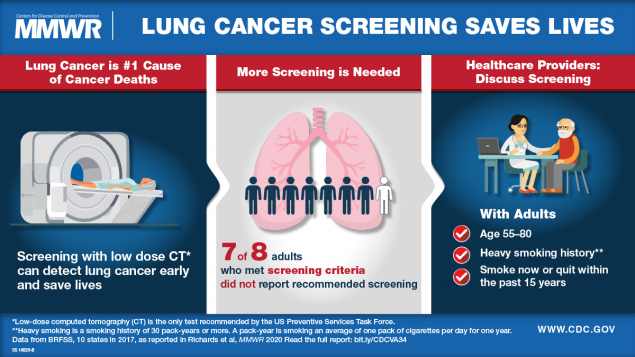What is added by this report?
In 10 states, one in eight persons aged 55–80 years met USPSTF criteria, and, among those meeting USPSTF criteria, only one in eight reported a lung cancer screening exam in the last 12 months.
What are the implications for public health practice?
Public health initiatives to prevent cigarette smoking, increase smoking cessation, and increase recommended lung cancer screening could help reduce lung cancer mortality.

Lung cancer is the leading cause of cancer death in the United States; 148,869 lung cancer-associated deaths occurred in 2016 (1). Mortality might be reduced by identifying lung cancer at an early stage when treatment can be more effective (2). In 2013, the U.S. Preventive Services Task Force (USPSTF) recommended annual screening for lung cancer with low-dose computed tomography (CT) for adults aged 55–80 years who have a 30 pack-year* smoking history and currently smoke or have quit within the past 15 years (2).† This was a Grade B recommendation, which required health insurance plans to cover lung cancer screening as a preventive service.§ To assess the prevalence of lung cancer screening by state, CDC used Behavioral Risk Factor Surveillance System (BRFSS) data¶ collected in 2017 by 10 states.** Overall, 12.7% adults aged 55–80 years met the USPSTF criteria for lung cancer screening. Among those meeting USPSTF criteria, 12.5% reported they had received a CT scan to check for lung cancer in the last 12 months. Efforts to educate health care providers and provide decision support tools might increase recommended lung cancer screening.
Read on at: